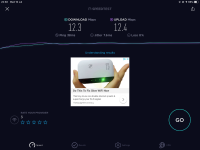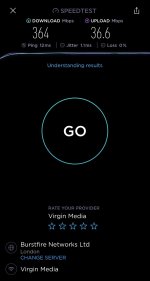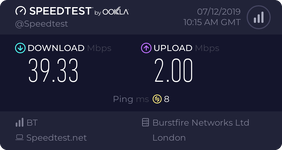Quijibo Jones
Member
16 gig is 16 gig. No speed booster can magic that faster. What it can do is spread the load of the connected devices. The routers that are provided by bt, sky, virgin are the cheapest s**t money can buy. A good WiFi router costs well in excess of £100.
It could be that your router is saturated with devices connected on WiFi. This is certainly the case in my house with phones, iPads, tv’s, sky q etc. When this happens you’ll get drop outs and less speed. You can combat this by wiring in devices such as tv, game consoles. Or you can buy a high end router.
Sorry to say though, 16 g is never going to go far. We run a hundred gig with virgin media. If you can get that in the area it’s simply the best for consistent speed.
It could be that your router is saturated with devices connected on WiFi. This is certainly the case in my house with phones, iPads, tv’s, sky q etc. When this happens you’ll get drop outs and less speed. You can combat this by wiring in devices such as tv, game consoles. Or you can buy a high end router.
Sorry to say though, 16 g is never going to go far. We run a hundred gig with virgin media. If you can get that in the area it’s simply the best for consistent speed.


